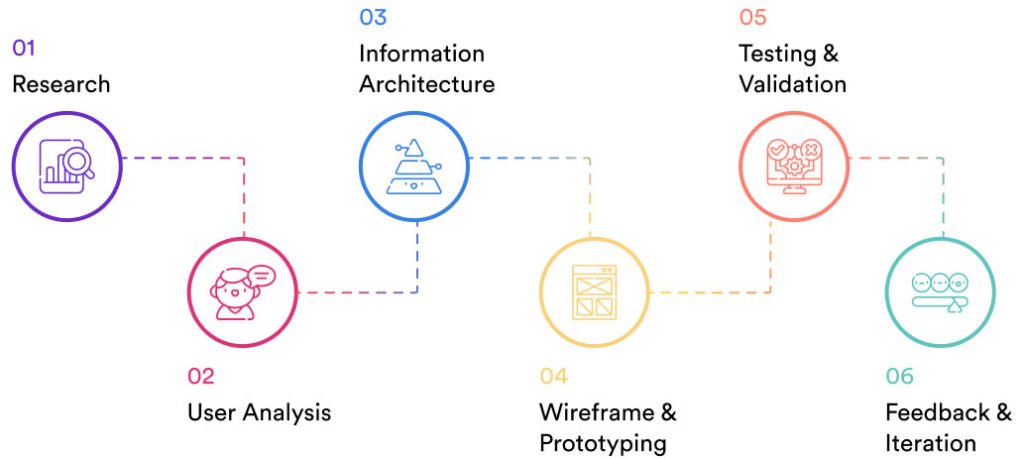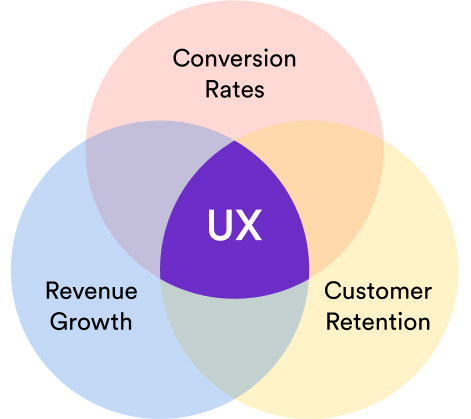Elevating Business Success through Strategic UX Design
February 16, 2024 | Read Time : 3 mins
Table of Contents
Understanding the profound impact of User Experience (UX) on business outcomes is crucial for any organization striving to excel in the digital arena.
This blog delves into the pivotal role of UX in enhancing customer satisfaction, driving conversions, saving costs, and aligning with business strategies. By exploring how a strategic approach to UX can fuel growth and ensure long-term success, we provide insights into optimizing user interactions across digital platforms.
Introduction to Strategic UX
Strategic UX encompasses more than just the creation of user-friendly interfaces; it represents a fundamental component of achieving overarching business objectives. Through the lens of UX, businesses can foster a deeper connection with their users, translating into tangible outcomes such as increased engagement, loyalty, and revenue.

The Importance of Customer Satisfaction in UX
a. Enhancing User Satisfaction
A seamless user experience directly correlates with higher levels of customer satisfaction. Features like intuitive navigation, coherent information architecture, and streamlined processes play a critical role in ensuring users find value and satisfaction in digital interactions, encouraging repeat visits and long-term loyalty.
b. Building Brand Loyalty through Positive Experiences
Positive user experiences propel customers to become brand advocates, naturally driving new users to the platform. This organic growth mechanism is essential for building a solid reputation and expanding the user base.
Driving Business Growth with UX
a. The Direct Link Between UX and Conversion Rates
A well-optimized UX strategy significantly impacts conversion rates. By simplifying the user journey and removing obstacles, businesses can encourage users to take desired actions, leading to increased conversions and enhanced ROI.
b. Reducing Friction Points to Maximize ROI
Identifying and eliminating friction points within the user experience is key to facilitating smoother journeys. This optimization not only boosts conversions but also strengthens the overall effectiveness of digital platforms.

Cost Savings through Effective UX Design
a. Minimizing User Frustration and Support Costs
Investing in UX design upfront can dramatically reduce the need for customer support and decrease the likelihood of user abandonment. A focus on preemptively addressing user needs and pain points ensures a more efficient and cost-effective operation.
b. The Long-term Benefits of Investing in UX
The strategic investment in UX research and design pays off by minimizing rework and support interventions, showcasing the cost-saving potential of a strong UX foundation.
Business-Driven UX: Aligning Strategy with User Needs
a. The Intersection of Business Goals and UX
Business-driven UX bridges the gap between user needs and business objectives, ensuring digital products not only meet user expectations but also contribute to the strategic goals of the organization.
b. Strategic Integration for Impactful Digital Products
Integrating UX with business strategy involves a deep understanding of both user behavior and business needs, leading to more impactful and successful digital solutions.
Measuring User Experience for Continuous Improvement
a. The Role of UX Measurement in Business Strategy
Measuring UX provides critical insights into the effectiveness of a business strategy and guides future improvements. This data-driven approach ensures continuous enhancement of user interactions.
b. Tools and Techniques for Effective UX Evaluation
Utilizing a variety of tools and techniques for UX measurement allows businesses to quantify user satisfaction and identify areas for improvement, driving strategic decisions.






